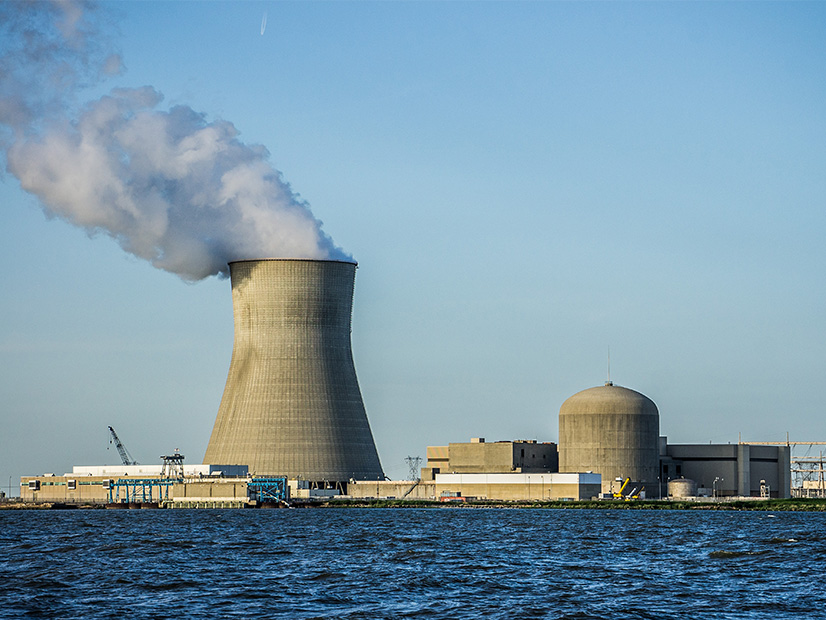The FERC ruling that blocked the proposed expansion of a data center in Pennsylvania isn’t a hindrance to developing data centers in New Jersey, Public Service Enterprise Group CEO Ralph A. LaRossa said in a third-quarter earnings call Nov. 4.
LaRossa said PSEG has received a surge in project inquiries and proposals and is well positioned due in part to its spare nuclear generating capacity and a state tax-break program enacted in July.
On Nov. 1, FERC rejected an amendment to Talen Energy’s interconnection service agreement (ISA) with PJM and PPL for a proposed expansion of Amazon Web Services’ 300-MW data center in Pennsylvania. (See FERC Rejects Expansion of Co-located Data Center at Susquehanna Nuclear Plant.)
“We are aware of the FERC technical conference and decision on Friday,” LaRossa said, adding that “we will continue to look for clarity on this issue going forward. That said, we believe that data center demand will continue to grow.”
PSEG is the sole owner and operator of the Hope Creek nuclear plant in Salem, N.J., and the operator and majority co-owner of two adjacent nuclear plants, Salem 1 and Salem 2, with Constellation Energy the minority co-owner. The company considers the three plants key to its ability to meet the future needs of data centers and artificial intelligence development projects, which the state’s economic development planners also are courting. (See PSEG Plans for 80-year Nuclear Generation in NJ.)
LaRossa called the FERC ruling on the Talen Energy project a “very narrow decision” that was “specific” only to the facts put forward by the parties involved in the Pennsylvania case.
“It has not slowed us down, and will not slow us down, from trying to help the state of New Jersey meet their economic development goals,” he said. “We continue to pursue contracting of our nuclear output at long-term, attractive pricing with low execution risk that can also help attract new technology-based businesses to New Jersey.”
The utility’s nuclear fleet has room for expansion and the utility is “pursuing thermal inefficiency upgrades” that could increase the output of the three Salem units by 200 MW, LaRossa said.
Co-location Factors
LaRossa said the utility recently updated the load study, part of an annual submission to PJM, which reflects the interest in putting data centers in the territory served by the utility.
“Our existing data center peak load currently stands at approximately 350 MW, and these sites are expected to expand by about 170 MW over the next 10 years,” he said. “We have also received formal applications to initiate nearly 400 MW of new data center load and inquiries over 1,200 MW of data center feasibility studies in new business.
“These amounts do not represent firm commitments, but they provide an indication of the increase in interest,” he said. He cited the example of an announcement by Roseland, N.J.-based CoreWeave that it had signed a lease to convert a 280,000-square-foot former laboratory and manufacturing building into a $1.25 billion data center.
“New Jersey has numerous locations that can be re-utilized in a similar fashion, and the state’s economic development efforts are focused on replicating this activity throughout the state,” he said. Potential developers are likely to be swayed in varying amounts by three factors, he said: to what extent a project represents “additionality,” or the creation of new renewable energy; the time it will take to get the project up and running; and the reliability of the energy source.
“We believe we’re in pretty good shape on all three of those factors,” he said. “And that’s why we haven’t indicated at all that we’re backing down.”
He said the utility is open to co-locating a data center next to one of the nuclear plants, for which potential clients typically would look at factors such as how much the utility charges for the energy and the transmission, and at the level of taxes. Those factors will determine whether the state can attract a “hyperscaler,” or large-scale data center, to the area, he said, noting that Gov. Phil Murphy (D) in July signed a law that would allocate $500 million a year in tax breaks to artificial intelligence data centers.
In a separate issue, LaRossa said PSEG has submitted a proposal to the New Jersey Board of Public Utilities (BPU) offshore infrastructure solicitation, the results of which are expected to be released by the end of 2024. (See NJ Offshore Infrastructure Plans Spark Electromagnetic Fears.)
The utility also submitted bids to PJM’s 2024 Regional Transmission Expansion Plan Window 1, LaRossa said. The solicitation seeks proposals to meet the RTO’s needs stemming from ongoing load growth.
PSEG’s third-quarter results for 2024 exceeded those in 2023. The company reported net income of $520 million ($1.04/share), compared with $139 million ($0.27/share). Non-GAAP operating earnings for Q3 2024 were $448 million ($0.90/share), compared with $425 million ($0.85/share) in the same period in 2023.



